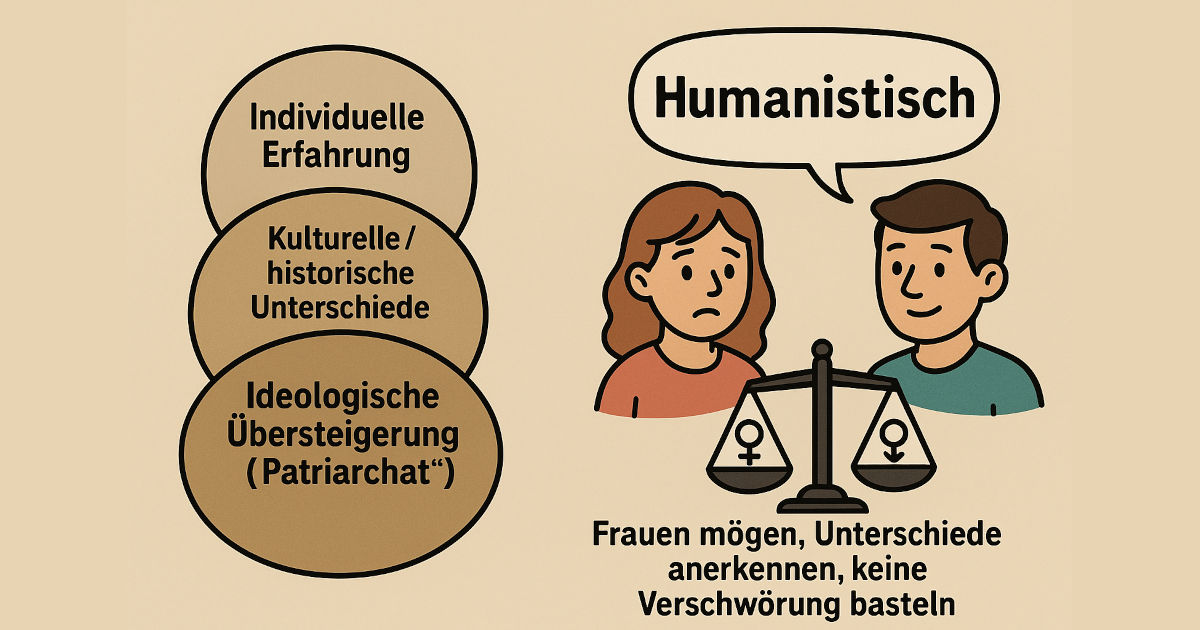Nicht nur im Bereich Menschenrechte kommen Männer zu kurz. Dasselbe gilt für die Gesundheitspolitik (was natürlich letzten Endes auch ein Menschenrecht, das Recht auf Leben, betrifft).
 Näheres verrät die akademische Analyse Men’s heightened risk of AIDS-related death: the legacy of gendered HIV testing and treatment strategies von Kathryn Dovel, Sara Yeatman, Susan Watkins und Michelle Poulin.
Näheres verrät die akademische Analyse Men’s heightened risk of AIDS-related death: the legacy of gendered HIV testing and treatment strategies von Kathryn Dovel, Sara Yeatman, Susan Watkins und Michelle Poulin.
Dort heißt es:
Women are frequently depicted as the face of AIDS in sub-Saharan Africa (SAA) [1–3], where they comprise nearly 58% of all reported HIV infections [4]. Donor dollars, policies and HIV programmes have followed suit, resulting in a near-exclusive focus on women (e.g. [5]). Although African women are represented as particularly vulnerable to HIV infection [6], it is men, not women, who are more likely to die of AIDS [7–9]. AIDS prevalence may have the face of a woman, but AIDS mortality has the face of a man.
(…) Much of the literature implicitly blames men for their poor use of testing and treatment, focusing on the role of masculinity as the primary explanation [21,22]. Recent data, however, raise doubt that masculinity is the main culprit. Men are just as likely as nonpregnant women to initiate voluntary counselling and testing (VCT) in some settings [23,24], and once tested positive, men initiate ART at similar rates as women [25,26]. These findings suggest that institutional supply-side barriers, and not solely masculinity, contribute to men’s lower rates of testing and treatment.
Our research in Malawi shows that by prioritizing women, health policies and institutions implicitly sideline men. (…) The few men who attend antenatal services with their partners are ignored in health education talks given before ANC and are given cues that their partner’s health is more important than their own [29]. (…) Given men’s burden of AIDS-related mortality and the near exclusive focus of health institutions on women, we argue that HIV-positive men represent a new vulnerable population in the AIDS epidemics of SSA. (…) The tacit but systematic exclusion of men from targeted HIV testing and treatment strategies constrain the ability of HIV-positive men to manage the risks associated with their infections. (…) Speci?cally, the absence of institutional support for testing men during their peak ages of HIV incidence (as is the case for women via antenatal services) has contributed to the large sexual disparities in HIV survival [34].
Die Parallen zu (anderen) Menschenrechtsthemen sind offensichtlich: Frauen wird Hilfe zuteil; die offenbar unnötigen Männer hingegen lässt die herrschende Genderpolitik verrecken. Wenn es darum geht, Menschenleben zu retten, bleibt für eine internationale Männerbewegung in ganz unterschiedlichen Bereichen viel zu tun – und das alles vor einem medialen Hintergrund, der Männerrechtler als Nazis phantasiert.
Aber warum ist unter den vier Autoren dieser Studie eigentlich kein einziger Mann? Reiner Zufall? Institutionelle Hindernisse, weil Männer, die sich für ihre Geschlechtsgenossen einsetzen, als „bäh“ gelten? Sind zu viele Männer ähnlich drauf wie Thomas Meinecke und Michael Kimmel, halten andere Männer also für minderwertig? Geht das so weit, Männer in letzter Konsequenz für irgendwie unwertes – oder zumindest „nicht ganz so wertvolles“ – Leben zu betrachten? (Dass Männer mehrere Jahre früher als Frauen sterben, scheint die meisten Kerle ja auch nicht großartig zu interessieren.) Ich bin wirklich gespannt, wie lange unsere Leitmedien auf dem Thema Männerdiskriminierung noch den Deckel halten können.
Der Beitrag erschien zuerst auf Genderama.



